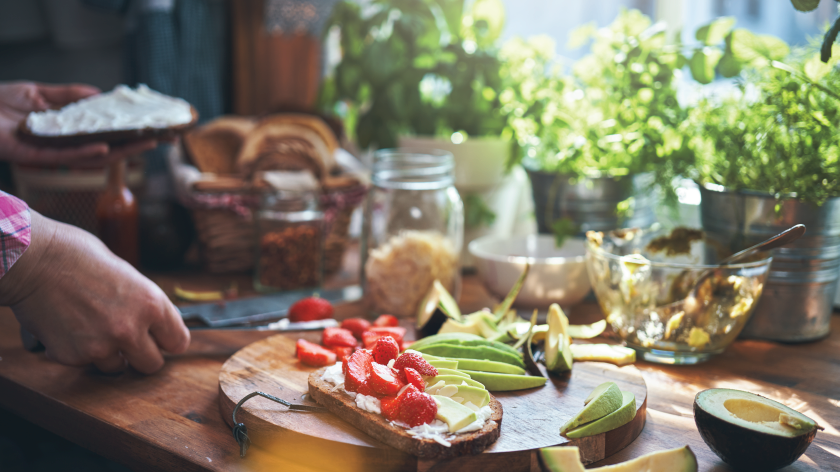What do you think of when you hear the word “snack”? Potato chips? Cookies? Candy? Insert your favorite “guilty” pleasure here.
Over the years, snacks have earned a bad reputation—and not without due cause. Many of our favorite snacks are high in sugar, and unhealthy fats and sodium, while also lacking the nutrition your body needs.
However, snacking in and of itself isn’t bad. When done mindfully, snacking can play an important role in a healthy eating plan and provide energy between meals. If you, like many people, enjoy a good afternoon (or anytime) snack, consider these six suggestions for smart snacking:
- Plan Ahead – Make the healthy choice the easy choice. If you plan your snacks ahead of time the same way you plan your meals, you’ll be more likely to purchase those items from the store and have them on hand when you get hungry. If you have unhealthy snacks sitting in your pantry, it’s going to be easy to reach for them.
- Choose whole foods where possible – Many processed foods are high in sugar, unhealthy fats and sodium. Opt for whole foods—foods that are natural, unprocessed and don’t contain a lot of additives like sugar or artificial flavor—instead. Samples include:
- Apples and nut butter
- Veggies (like bell peppers or carrots) and hummus
- Mixed nuts
- Make-your-own Trail mix
- Whole wheat toast with avocado
- Fruit smoothies
- Focus on nutrients instead of calories – While it’s okay to be mindful of your calories, don’t focus on calories alone. There are a lot of low-calorie snacks that feature unhealthy additives and won’t provide the nutrients your body needs. Look for snacks that are rich in vitamins, minerals, complex carbohydrates, protein and/or healthy fats.
- Mix and match – Try mixing your food groups when you create your snacks so that you get the necessary macronutrients (proteins, carbohydrates and fats). For example, try pairing whole wheat crackers (carbs) with low fat cheese (fat), nuts (protein) with grapes (carbs), or avocado (fats) with whole wheat toast (carbs). Mixing food groups is also a good way to keep your snacking fun and interesting.
- Be mindful – When it’s time for a snack, stop what you’re doing for a few minutes. Try not to snack while you’re doing something, i.e., working at your desk, browsing the internet or watching TV. By focusing on your snacking, you’ll be able to listen to your body’s cues and know when you’re no longer hungry.
- Pack to-go snacks – Oftentimes our unhealthy snacking occurs when we’re on-the-go. It’s easy to grab a bag of potato chips from a convenience store or swing through a drive-through restaurant when you’re hungry and busy. Pack a healthy snack that doesn’t require refrigeration—trail mix, whole fruit, whole grain crackers, etc. Throw it in a bag and bring it with you.
Snackspiration
If you’re looking for snack inspiration, check out these lists. You’ll find plenty of options to fulfill your snack needs.
Resources:
- https://www.health.harvard.edu/staying-healthy/7-ways-to-snack-smarter
- https://totaste.com/snack-attack/
Perry is a digital content strategist for Vitality Group. He loves black coffee, college football, being active and afternoons spent at Wrigley Field. When he’s not working for VG, you can find him hanging out with friends or curating a new Spotify playlist.







